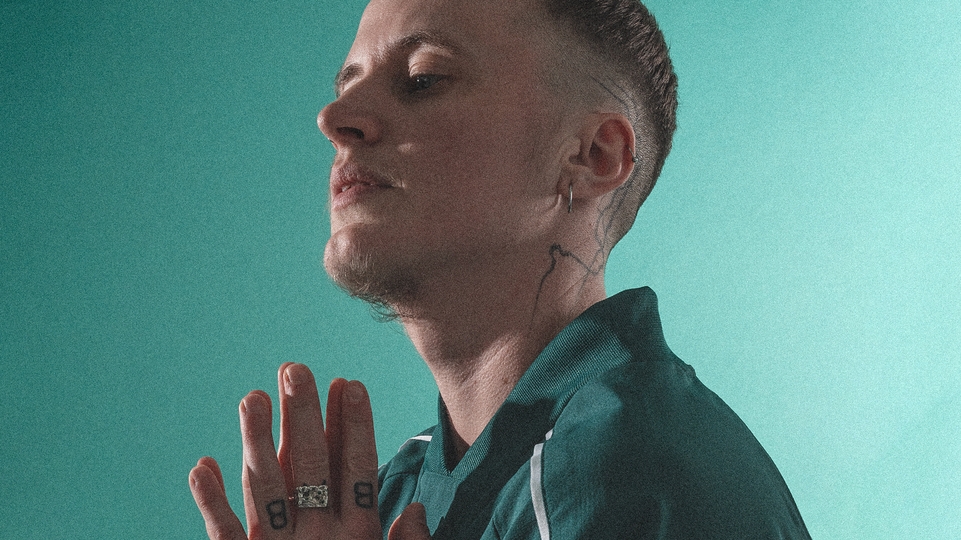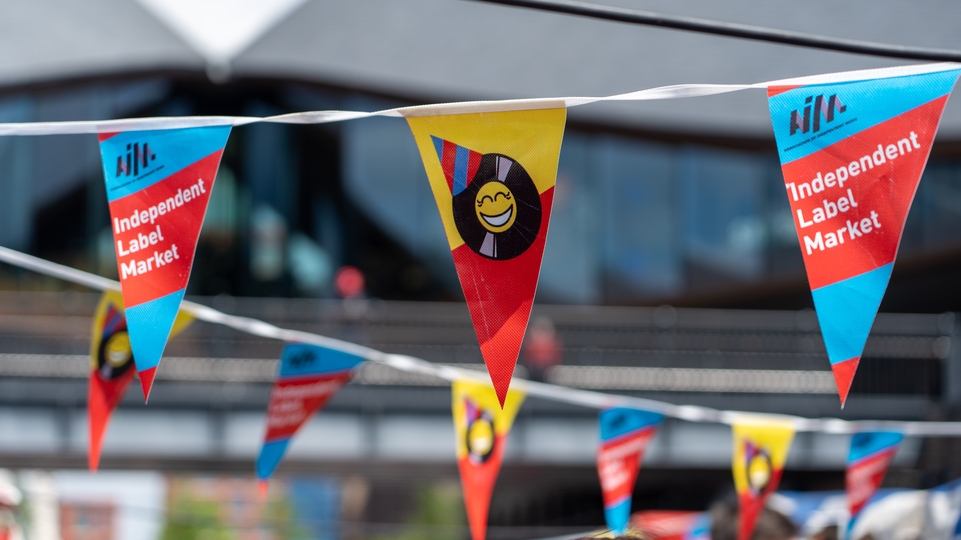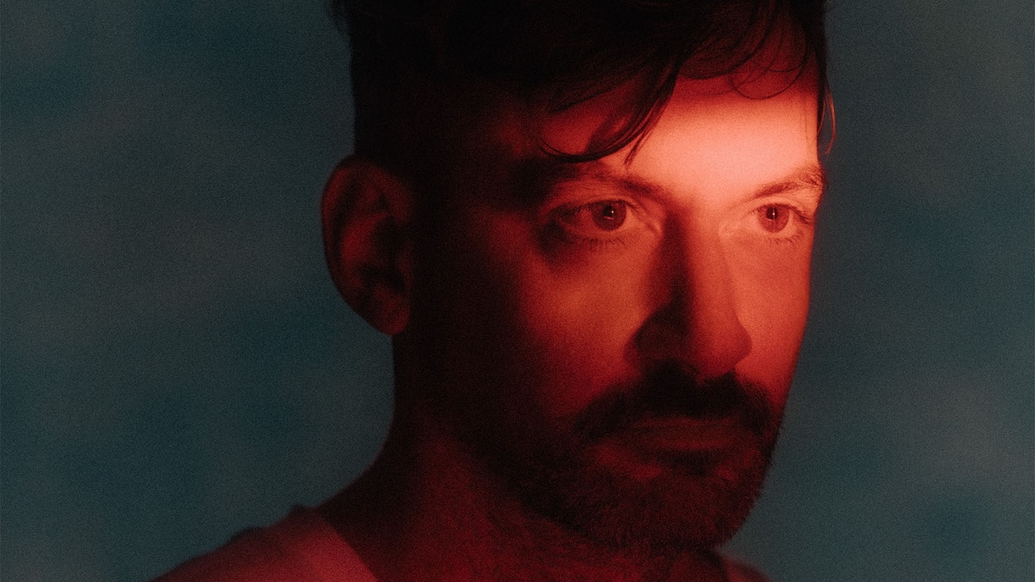
Bonobo: the spaces between
With his new album, ‘Fragments’, on Ninja Tune, English electronic musician and DJ Bonobo has delivered his strongest, most versatile album since 2010's 'Black Sands'. Ben Murphy meets the now LA-based, Grammy nominated artist to hear about the creation of the record, his journeys into the American landscape, his newfound love of photography and more
Sat on a sofa in the Ninja Tune offices, somewhere in Kennington, South London, Simon Green, aka Bonobo, is pondering the question of why his music resonates with so many people. “I think maybe because it comes from a very personal place,” he says. “It’s an emotional response from me, I guess.”
Incorporating elements of UK garage, ambient, breakbeat, house, jazz and R&B, the music that Bonobo makes has an experimental edge — yet his sound crosses over to all kinds of audiences. He has a massive following, selling out huge venues like London’s Alexandra Palace or Denver’s Red Rocks Amphitheatre, and performs everywhere from Glastonbury to Coachella and Japan’s Fuji Rock festival. His last album, 2017’s ‘Migration’, was No.1 on the US Billboard Dance Chart and made the top 5 in the UK, while his 2010 record ‘Black Sands’ is widely hailed as a modern classic. There’s something about his music that strikes a universal chord.
“When I put out my first record, ‘Terrapin’, it was a really weird little thing I did on an Akai sampler, it was just like a couple of guitar lines and a sitar,” he recalls. “I thought it was so silly, because it was just this thing I made that was really lo-fi. Then loads of people loved it; they found it very personal, and connected with it that way. That sort of very honest, emotional content is possibly the thing that people connect with. If you feel there’s a familiarity, or there’s a sense of nostalgia. Maybe that’s what it is?”
Green has just flown back to the UK from his home in Los Angeles for the first time in a few years. Wearing a black T-shirt with the sleeves rolled up and army fatigue trousers, his hair is swept to the side, the temples greying a little. With his salt-and-pepper stubble and pale blue eyes, he exudes a sense of calm. A friendly interviewee, he’s softly spoken, but becomes more animated when he hits upon a subject that sparks his imagination. Sat in Ninja’s meeting room, the wall behind him is plastered with posters, flyers and ephemera charting the label’s long and illustrious history. Green has been releasing music since 1999, and has been signed to Ninja Tune for most of that time. He’s part of that epic story, and his own shift from downtempo beats to lively dancefloor sounds in 2010 was one mirrored by the label.
“It’s like a permanent museum,” Green says, glancing back at the vibrant art on the back wall. “This is the only room they didn’t renovate in the office. They kept it as a time capsule of the old Ninja. I like the spirit of the label, it’s a very independent thing that’s not beholden to hype, or clinging on to specific genre-hopping ideas. It’s just doing what feels right at the time.”
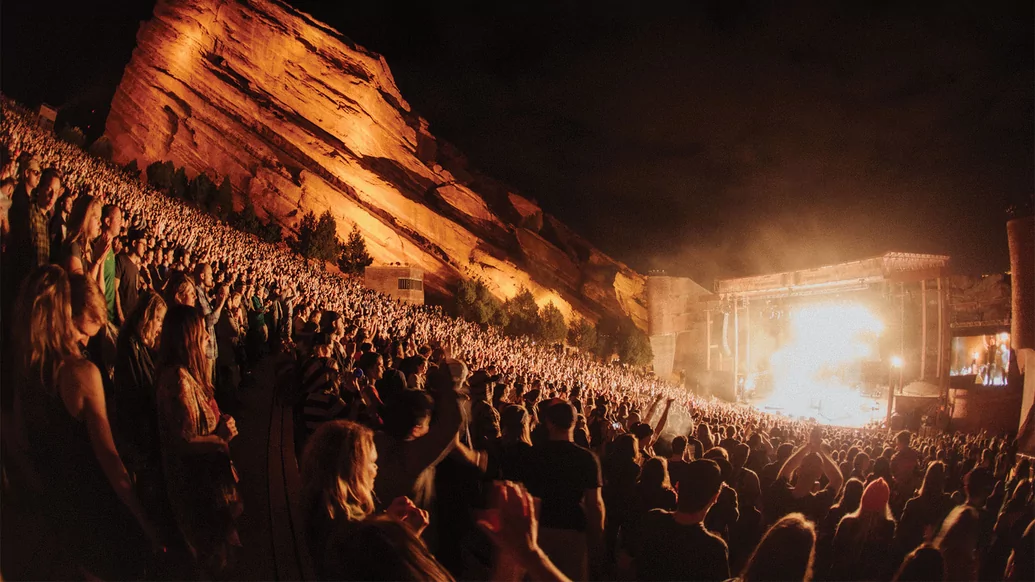
FRAGMENTS
The occasion of our interview is Bonobo’s new album, ‘Fragments’, his first in four years and possibly his best since 2010’s ‘Black Sands’. Across the record, which is set for release in January, familiar Bonobo characteristics combine with new ideas and experiments. In its mixture of sounds, it feels like a product of now, packing in a fair share of bangers built for the club and live stage, as well as more reflective moments. It also features a host of collaborators, who further flesh out its melodic and emotional landscapes into memorable songs.
‘Closer’, with its 2-step skip, feels like a relative of earlier hit ‘Eyes Down’, yet it has a more electronic melancholia, a more layered intricacy. ‘Sapien’ has the same rhythmic shuffle, but adds threads of micro-tuned synth, trance- tinged riffs and a shredded breakbeat, before a hefty bleep-driven coda. Both feel inspired by the rave and hardcore influences in current dance music, something Green says has fired him up recently.
“It’s all come full circle now — that emotional rave music. I think there’s some really fun stuff happening at the moment; this resurgence of breakbeat, like the slow, deconstructed junglist kind of stuff,” Green says. “Like Overmono. They’ve done some amazing stuff. I love that approach to it, where it’s stripped down but emotional... it’s almost a throwback to people like Mike Paradinas, that Rephlex era of breakbeats. That was something I was into.”
‘Rosewood’ is destined to be a live favourite, with its warm keys, dusty house groove and soulful sample, building into a growling synth beast as it progresses. But the record’s most astonishing track is ‘Otomo’, a collaboration with Silver Bear/Blip Discs producer O’Flynn. Driven by a broken beat rhythm, it cuts to a spine-tingling vocal sampled from Bulgarian choir 100 Kaba-Gaidi, and blends it with cosmic synth melodies before becoming a strobe-lit, bass-heavy roller. It’s a perfect encapsulation of what Bonobo does so well: enmeshing the electronic and organic, merging samples with instrumentation and beats seamlessly.
“I was digging around on Bandcamp, into the archives,” Green says, explaining where the sample came from. “There’s a label that does a lot of archive folk stuff, and there was tonnes of it. A lot of very old Jewish pipe music, Turkish traditional stuff — then there was this Bulgarian bagpipe choir. The cover was loads of people with bagpipes stood out on this alpine-looking valley. I don’t know how big the choir was or what room it was recorded in, but it just sounded like this overwhelming, harmonious drone. It’s just this choral noise. I recorded a passage of it in, and started playing some harmonies around it. I did a few edits and then found this harmony, found the tempo, and thought, ‘this is something’, but I couldn’t really get it into a structure.”
Sending the track to O’Flynn, though, helped Green to formalise it into a Bonobo banger. “I’d been playing a lot of O’Flynn’s music,” he continues. “He has this very good way of switching between these dynamics of sparse sample source things into these big percussive moments, so I was like, ‘Can I send you something, just to get an opinion, really? Do you have any ideas of how this might be a tune?’ And he was like, ‘Yeah, sure, send me some stems’. What he sent back was this huge drop moment.”


"Music, especially mine, is often based on optimism. There’s a sense of hope in it. It’s a celebratory thing. Without having feedback from an audience, without any of the interaction and the usual way I engage with people that listen to it, it got quite weird. There was the paradox, or the irony, of having all the time to do the thing you’re trying to make the time to do, and just sitting there and having nothing to say.”
‘Fragments’ also contains a suite of songs. ‘Shadows’ is a bittersweet and low-lit house track with bubbling electronic sequences, sweeping strings, and the vocals of Jordan Rakei, a good friend who Green has previously toured with. With its lyric, “Save me from the unknown”, it seems to tap into the collective uncertainty we’ve experienced since the beginning of the Covid-19 pandemic.
“I’ve known Jordan from the whole Peckham crew, through Bradley Zero and Rhythm Section,” Green says. “There’s something classic about what he does. He was the support at a few shows, which is where we connected, and he ended up getting up in our show, doing a couple of songs as well. I had ‘Shadows’, which was quite an early thing for the album. It was this really long beat, and I was trying to do this slo-mo, Detroit, Theo Parrish thing; very shuffly, swingy and sparse. It was quite minimal when I sent it to him, a seven-minute, chugging club tune without many things happening. He sent back three different ideas and was like, ‘Which one of these do you think I should pursue?’ It was the first piece in place of the whole record.”
Elsewhere on the album, Bonobo taps into R&B, with the slow beat and emotive, FX-laden vocals of ‘From You’, featuring Joji, showing a new side of his production. Jamila Woods provides an addictive hook on the strummed acoustic guitar, crisp beat and harp plucks of ‘Tides’, and the closer ‘Day By Day’, with Kadhja Bonet, combines her pellucid vocals with jazz saxophone, orchestral touches and a lush melody, for an album highlight.
“She lives in Orange County, which is adjacent to LA,” Green says. “Very early on, she was someone I wanted to work with on this record. I love all her stuff, and I loved her string arrangement on that ‘Remember The Rain’ tune of hers.”
Due to pandemic restrictions, the collaborations on the album largely happened remotely, but Green reckons that people being able to make music in the security of their homes made for a more intimate and honest sound.
“Yeah, ’cause people are in their own space,” he says. “They can take their time with it, it’s more like, ‘I’ve done this thing, what do you think?’ That’s more freeing for people. Then it’s a case of taking parts and mixing them. That was a really good experience. It brought the record onto a new level sonically.”
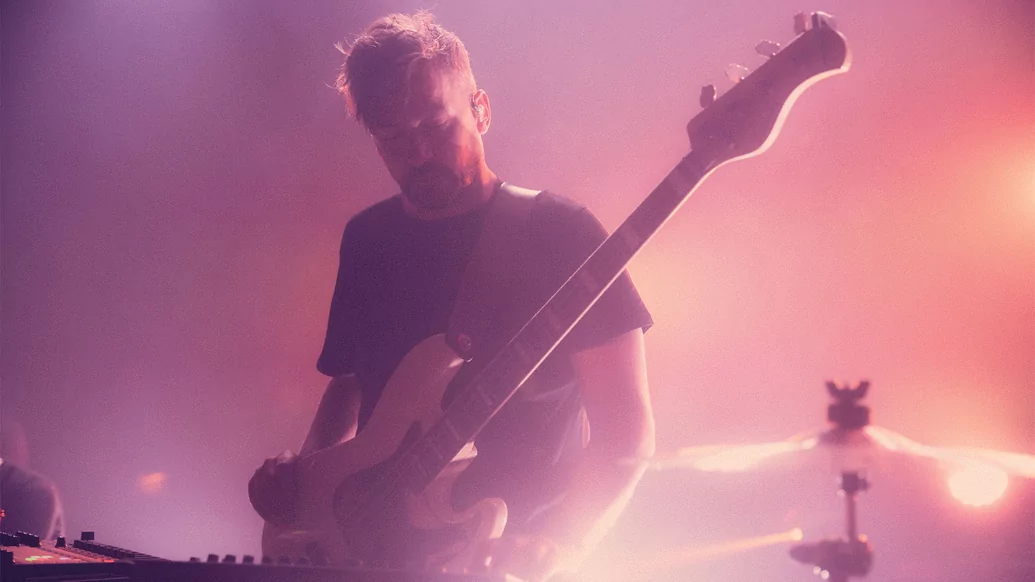
EXISTENTIAL
The tunes that comprise ‘Fragments’ sound like Bonobo at his best, a natural creation from an artist at the peak of his powers. Making the album, though, was difficult to start with. After the release of 2017’s ‘Migration’, Green was exhausted, as the stresses of constant touring, the grief of recently losing his parents, and the horror of Donald Trump becoming US President began to take their toll — and he stopped making music for a while.
“After ‘Migration’, there were a lot of things that happened personally. I wanted to stop and just assess everything,” Green says. “I took a year off, and decided to not talk about doing another record for a little bit. Especially with management and the label. I was just like, ‘Don’t ask me when the next record is, it’s just gonna happen when it happens’. So everyone left me alone and that felt really good.”
When he was touring, Green developed a passion for photography, often driving himself to locations separate to the crew so he could spend time in nature and document the places he visited. Just as he was starting to get his productive spark back in early 2020, as Green puts it, “Covid happened”. Like many others in the creative industries, the pandemic and subsequent lockdowns made him question the viability of his career.
“I don’t know how many people thrived during Covid creatively, but I definitely wasn’t one of them,” he says. “At the beginning it felt like a novelty. Everyone was talking about how this was going to be a great creative time for everyone, but by the time summer 2020 rolled around, I’d completely lost all momentum. It got quite existential in the middle because there were no gigs, no releases. Music, especially mine, is often based on optimism. There’s a sense of hope in it. It’s a celebratory thing. Without having feedback from an audience, without any of the interaction and the usual way I engage with people that listen to it, it got quite weird. There was the paradox, or the irony, of having all the time to do the thing you’re trying to make the time to do, and just sitting there and having nothing to say.”
Green reset his brain by getting out into the American wilderness, camping in remote Utah outside phone signal range during the 2020 US election. Unable to vote, as he’s not an American citizen, he wanted to disconnect from the digital noise.
“I wanted to go somewhere for 24 hours while that was happening,” he says. “So I drove out to Utah and camped out. It was a nice detachment. That’s important — a reset. Whether that directly inspired something musically, I don’t know, but it’s a good place for the mind to regenerate.” Another adventure found him driving to Death Valley in California for a stroll in the searing desert heat — one he nearly didn’t come back from.
“It’s the hottest place on earth, 52 degrees Celsius or something like that. [Photographer] Dan Medhurst and I went out on a walk in the middle of the day despite all the signs saying ‘don’t do this’. There’s all these sand dunes that go out into the horizon. It didn’t feel like that far: you could still see the car park, or where the car was anyway. And then you realise how quickly you’re being overwhelmed by the heat. It was only half a mile but, you know you start getting dizzy, and thinking, ‘that half a mile seems really far all of a sudden’.”
Then there was the time he nearly stepped on a deadly reptile. “I gunned it out to Joshua Tree national park in my car and got to the middle of the desert, parked, and I wanted to climb up on a rock to see the view. As I was walking through, there was this ‘crrrr’ noise. I looked down and there was a rattlesnake.”
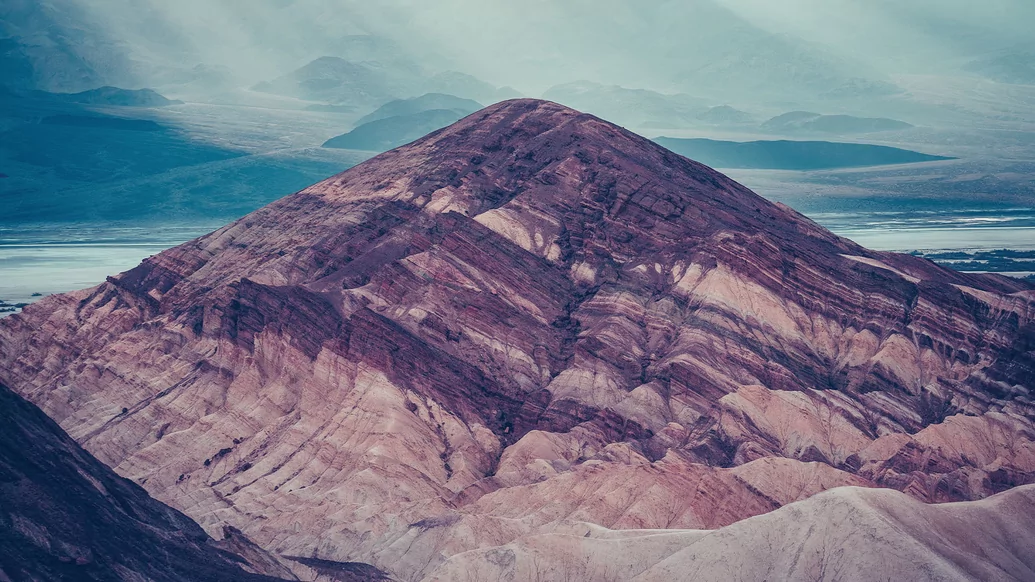

GREEN SHOOTS
With the inspiration of nature and some time to restore himself, there were green shoots. Slowly, ideas for the album started to form together piece by piece: the ‘Fragments’ of the title. One of the first came via modular synths, which Green decided to teach himself to use during lockdown.
“That was a good distraction in a way, discovering how to use this huge sound source that I could pull from,” he says. “Learning while waiting for the creative momentum to come back. By the time my next idea came, I had all this new knowledge of how to work with sound.”
For Green, part of the fun of modular was handing over some of the compositional responsibility to the machines: wiring them up and setting them off to generate infinite patterns, recording the results and then cutting those up to stitch into fresh tunes.
“It’s the generative nature of it,” he says. “You can set parameters, but you can set the amount of chaos within that. You can define enough of that randomness that it will generate, and you can sit there and listen to it do this thing while you go and interact with it — nudge it, poke things. That’s inspiring. A lot of the tunes on this record, even the ones that don’t sound like it, started from these randomised modular patches. I came from that sample background of cut ’n’ paste, the hip-hop thing back in the day. This was a new way of approaching that — getting creative sound sources from modular synths and using them as a starting point instead of looking for a break or a sample to flip.”
Another vital piece in the record’s musical mosaic was the harp playing of Lara Somogyi. Rather than featuring her on a specific track, Green used snippets of recordings, peppering them throughout the album and building tracks around the diaphanous notes.
“I’m always looking for harp samples, those kinds of tones and textures. So rather than recording something specifically for a tune, I said to her, ‘how about just going and recording for a day in the studio?’ We came away with a whole album’s worth of harp samples. That was pre- Covid. This harp recording was the foundation for loads of this record, it’s on almost all of it.
“Lara occupies a unique space. A lot of classical harpists are not really interested or familiar with any genre outside of the one that they exist in,” Green continues. “But she’s super into experimenting, or playing with more experimental people, and she does a lot of stuff with the Erased Tapes artists. She’s really interesting — she sends her harp through this big pedal board, so there’s loads of octave shifts, and she’s getting motorised kitchen implements and going ‘brrrr’, making these big, thunderous bass tones.”
The final foundational contributor to ‘Fragments’ was Miguel Atwood-Ferguson, a legendary musician, composer and conductor in Los Angeles who has worked with everyone from Dr. Dre and Mary J. Blige to Flying Lotus and Cinematic Orchestra. Famed for his orchestral interpretation of J. Dilla’s classic hip-hop productions, ‘Suite For Ma Dukes’, he contributed string arrangements to ‘Fragments’, adding to the album’s rich and emotive quality.
“I reached out to him,” Green says. “It took a while actually, because he’s a bit of an enigma, but it was peak lockdown, so we went and met for some hikes — as they call them in LA — in Griffith Park, where the Hollywood sign is.
“Before we’d even switched a microphone on, we’d go walking around in the hills, talking. He’s a very spiritual dude. We connected and now have a genuine good friendship. I explained where I was coming from with the record, what the project was about, and he was onboard and totally got it. That’s a thing for a lot of this record — collaborating, but not actually being in the room at the same time. With him, there was at least that connection.”
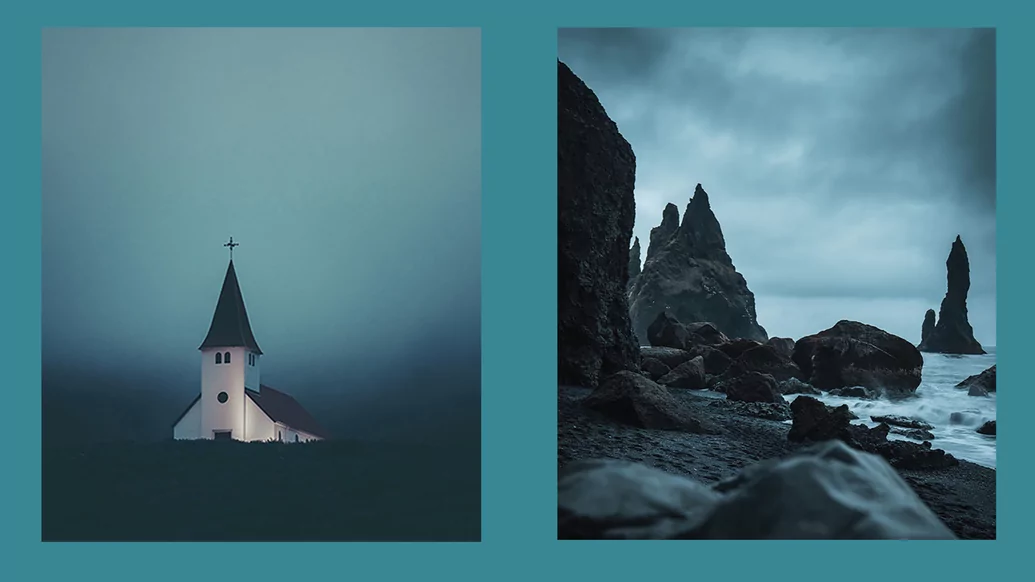
CALIFORNIA LOVE
Green lived in Brighton and London before moving to the US, specifically New York, for a while. But Los Angeles is home now. After constantly touring around the world, whenever he was in LA, he’d never want to leave, so decided to put down more permanent roots in sunny California.
“In 2015, it felt like there was an exodus of all the friends I knew in Brooklyn, who were moving out to the West Coast,” Green says. “There was this big shift and a moment happening, with lots of good people doing good stuff in LA. Every time I was there, it was great, so — why not, really? In New York, as much as I love it, I never really felt part of the city. I had no real reason to be there apart from enjoying it and it being fun. Here, you can go up to Sequoia National Park with all the redwood forests, or go to the beach, or be in the desert.”
One thing that made Green feel welcome there was the large contingent of expat British musicians. He’s friends with a group of artists in LA, and whether collaborating or just hanging out, he feels part of a community.
“As much as I try to not just stick with the Brits, there are a lot of them out there. It’s comforting in a way. When I first got there, Jon Hopkins was out, and we ended up working together on ‘Migration’. He introduced me to Bobby Krlic, who’s [Björk collaborator and soundtrack composer] The Haxan Cloak, who I’m good friends with — we spent most of lockdown together actually, in my little bubble. We worked on some stuff for this record which didn’t end up making it on, maybe it will come out next year. Ninja Tune have an office out there now. It’s expanding, it’s almost the size of this [London] one now. Totally Enormous Extinct Dinosaurs, he was out there, too. That was the crew.” Green is enthusiastic about the LA electronic music scene. Often overshadowed by US hubs like New York or Detroit, he reckons LA has a vibrant underground at the minute that makes it an exciting place to live.
“I think Brainfeeder is the first thing that comes to mind, but there is a strong house scene out there now too, with downtown warehouse parties. Lights Down Low is a really good party. It’s a great place to be based creatively.”
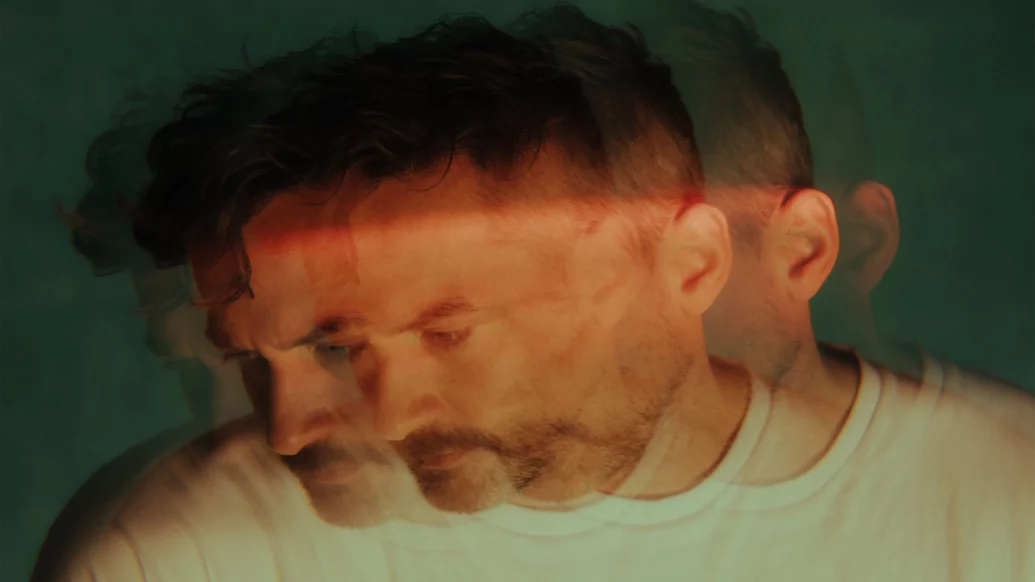

BEGINNINGS
Green grew up in a musical family who lived in Hampshire and Sussex at different stages of his childhood. His dad was a folk musician, and his sisters were both accomplished players. He would try his hand at the piano, before getting into indie rock and hip-hop, and playing bass guitar in a band with his friends. He’d borrow his dad’s Roland 707 drum machine and jam along with it, before getting an Akai S950 sampler.
“It was the classic hip-hop and jungle sampler,” Green says. “I had this old Atari ST, and I realised how to loop and re-trigger samples. You could arrange that on a black and white Cubase sequencer, as it was then. That was such a big moment,” he adds, pausing to make a dramatic ‘mind-blown’ action, “that you could chop up drums and rearrange them and sequence them.”
He got more into hip-hop and electronic music, trying to create his own take on them. He loved Future Sound Of London, early Air, Mo’ Wax, DJ Shadow and Meat Beat Manifesto. When Green mentions American trip-hop and breakbeat pioneers Tranquility Bass and God Within, his eyes light up. “I loved ‘Rain Cry’ by God Within, and Rabbit In The Moon, that Hardkiss ‘Delusions Of Grandeur’ album. ‘Rain Cry’ was a massive tune for me. And stuff like Sun Electric.
That kind of era was the jump-off point for stuff where I felt inspired and that I could be a part of. There was something about that which resonated. I was just trying to make music between the spaces of all of those things.”
A move to Brighton was another source of inspiration. In the ’90s, the seaside city was teeming with DJs, producers and artists, which encouraged Green to take his own music- making seriously. “The main thing in Brighton at the time was big beat, with Fatboy Slim, Skint Records and the whole explosion of that. I felt a bit of local pride for that,” he says. “But it was more the other nights that Ross Dewbury and Rob Luis were doing, bringing in people like Kruder & Dorfmeister, Gilles Peterson and LTJ Bukem. That felt very much like what Brighton was about at the time. Everyone was making music, making art and opening shops. Everybody had a little setup in their room of a turntable and a sampler, discovering that that was enough to do something meaningful with.”
After 1999’s ‘Scuba’ EP on Fly Casual, he released ‘Terrapin’ through Rob Luis’ label, Tru Thoughts. A delicate and emotive piece of acoustic guitar, sitar and sampladelia, it made a big impact, leading to his breakout debut album ‘Animal Magic’ in 2000. This sound, built from trip-hop and downtempo beats but also indie rock and dance music influences, carried through his 2003 Ninja Tune debut ‘Dial ‘M’ For Monkey’ and 2006 follow-up ‘Days To Come’.
But in the late 2000s, he found himself at a stylistic crossroads, uninspired by the downtempo beats scene. What got him fired up again was hearing the beats emanating from clubs like FWD>> at Plastic People, where dubstep was intermingling with wonky hip-hop and techno influences to become an indefinable sound briefly christened post-dubstep.
“It was around the time of 2008, 2009, Joy O’s ‘Hyph Mngo’ and the early Mount Kimbie stuff,” Green says. “That era was exciting. The sound that was coming out of London was fun again. It made dance music and beat music progressive, but also really enjoyable and colourful.”
Tuning into this was something of a damascene conversion. Bonobo’s next record, ‘Black Sands’, as well as having a share of slower moments, found him making dance music proper for the first time, a thread which has continued throughout all his work since. Remembering the time, Green grins, as he recounts the moment he realised a track he’d just recorded for fun could be one of the album’s best tracks.
“The tune ‘Eyes Down’, I just love that beat, the skippy garage thing with that sub-bass,” he says. “When I was making it, a mate of mine came over, and I didn’t think much of it, it was just a little noodle. I banged on a few tunes I was working on, and he said, ‘Wait, wait, what’s this one?’ I was like, ‘Really?’ And he said, ‘Yeah, this is the one’.”

OUTLIER
Though he’s known for epic live shows now (his last tour attracted over 2 million fans in total), Bonobo is also a DJ. In 2019, he made the first mix for the new ‘fabric presents’ compilation series, which features exclusive new productions alongside tracks from DJ Seinfeld, TSHA, Dark Sky, John Beltran and O’Flynn, among others. He’s also hosted his club event, OUTLIER, around the world, inviting other like-minded DJs to play alongside him.
In 2020, OUTLIER became a label too, with Bonobo releasing the debut track, ’Heartbreak’, an uplifting breakbeat piece made in collaboration with Totally Enormous Extinct Dinosaurs. So far, there’s also been the vivid neon electronics of Poté’s new album ‘A Tenuous Tale Of Her’, and Green plans more releases in the new year.
“The ethos of OUTLIER generally is it’s more about the DJ-facing side of things,” Green says. “It’s a more alternative lean on whatever dance music is. It’s not straight down the line tech-house.”
With the advent of Covid-19, looking ahead has become a little more unpredictable than before, but Bonobo is planning his first live tour in a few years for 2022. He’s got another collaborative release with Jacques Greene coming up, likely through OUTLIER, while there’s loads more fresh Bonobo material that might see the light of day very soon. “After I finished this record I still had a lot of momentum, so I’ve been making loads of music since,” he says. “There’s almost another record ready — whether that will come out in little bits over the next couple of years or in an album, I’m not sure yet.”
Beyond his various projects and live performances, he’s still got a musical ambition he’d like to fulfil. “I’d like to do some film scoring at some point, but speaking with friends who do that for a living, it’s a massive undertaking,” he says. “It’s not something to be done lightly. You have to commit to it. I’ve had a couple of meetings with scoring agents and they’ve explained the gravity of taking on a score, but I’d love to get into that.”
Our talk wraps up, and Green turns his attention to the stack of posters he has to sign for fans. When we mention that he’s been releasing music for over 20 years, most of it on Ninja Tune, he gets philosophical. “I was thinking about the longevity of Ninja and some of the stuff that I considered legendary things on the label. It’s a big legacy. Twenty years is a long time for music. I feel like the shelf-life for a lot of artists is a bit shorter than that, so I feel lucky.”
We have the feeling, though, that luck has nothing to do with it. ’Fragments’ has all the emotion, invention and hooks of classic Bonobo: the things that have made him so popular. Like ‘Black Sands’, it’s a record he’ll be talking about in another 10 years’ time — and beyond.

